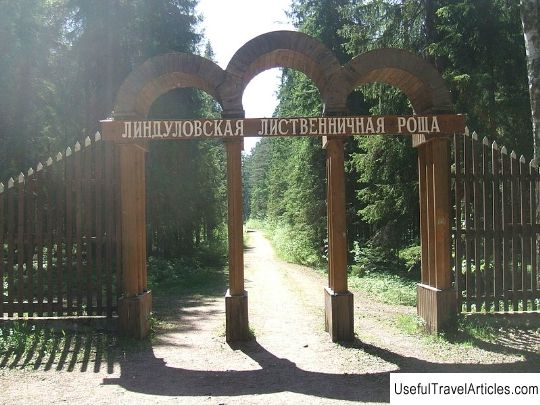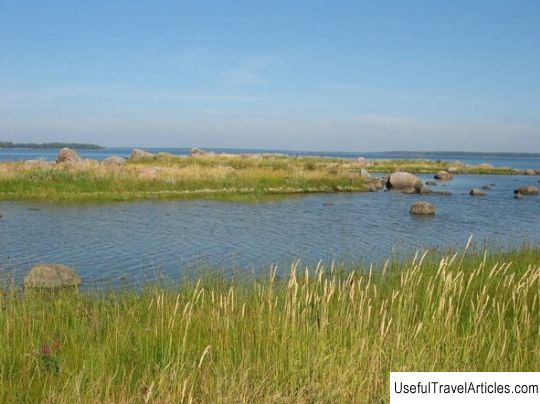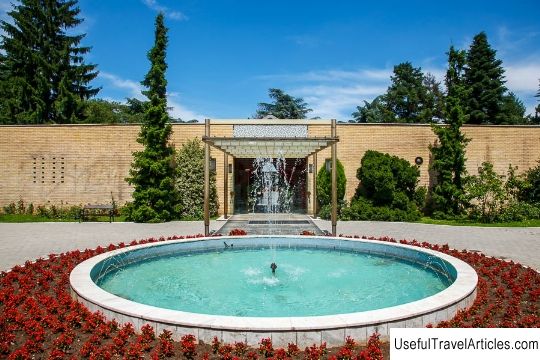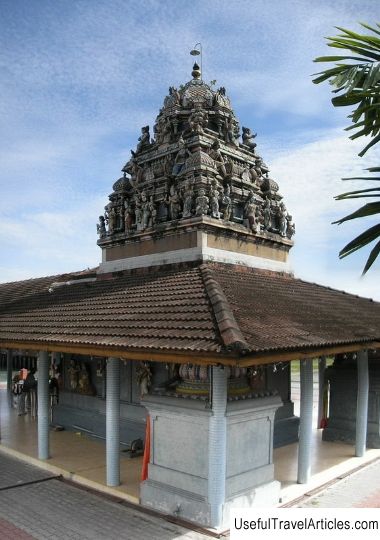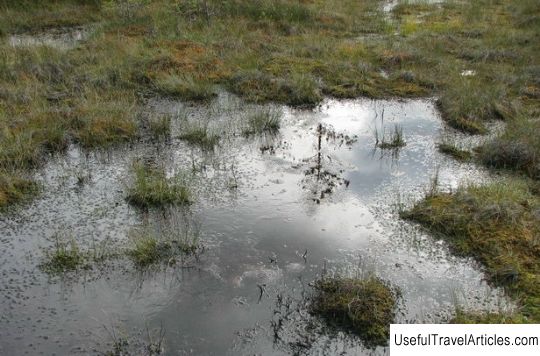Lindulovskaya grove description and photo - Russia - Leningrad region: Vyborgsky district
Lindulovskaya grove description and photo - Russia - Leningrad region: Vyborgsky district. Detailed information about the attraction. Description, photos and a map showing the nearest significant objects. Photo and descriptionLindulovskaya Roscha is a botanical nature reserve located in the Vyborgsky district of the Leningrad region, near the village of Roshchino. Occupying an area of almost 1000 hectares, the reserve is spread along both banks of the Roshchinka River, on two sides of the road from Roshchino to Sosnovaya Polyana. The State Natural Botanical Sanctuary was established by the decision of the Leningrad Regional Executive Committee in 1976. The main goal of creating the sanctuary is to preserve the oldest artificial plantation of the unique culture of Siberian larch Larix sibirica Ledeb in Russia, located outside the boundaries of its range in the valley of the Roshinka River ( former name Lintulovka), as well as the natural complex of the river valley with rare species of animals and plants. The beginning of Lindulovskaya Grove was laid back in 1738 by the decree issued earlier by Peter the Great on growing here a ship's timber for the shipyard in Kronstadt. The first sowing of larch seeds, collected near Arkhangelsk, was made by the Forstmaster of Her Imperial Majesty, the forest expert Ferdinand Gabriel Fokel in 1738. He was assisted by his students: Ivan Kipriyanov, Matvey Alshansky, Fedot Starostin, Peter Pavlov. The first section was created by Fokel himself in the spring of 1738. The rest of the grove sections were created by his students. In 1856, a protected regime was established in Lindulovskaya Grove, and in 1990 the larch grove was included in the list of objects protected by UNESCO . Lindulovskaya Roscha is the pearl of the Russian forestry business, representing the unique oldest larch cultures, both in Russia and in Europe. Here grow: Daurian, Siberian larch, Sukachev larch. For more than 200 years, the grove has been an experimental and educational facility for several generations of foresters. In addition to larch, pine, spruce, cedar, fir, oak, ash, elm, and alder grow in the grove. Old crops have been preserved mainly in one sector on an area of 23.5 hectares. They number more than 4 thousand trees with a height of 38 to 42 m and a trunk diameter of 0.49 to 0.52 m (at chest level). Some larch trees have a girth of up to 1 m. The Lindulovskaya Grove was badly damaged by those that swept here in 1824, 1924, 1925. hurricanes, as well as during the hostilities of 1939-1945. The main plantings of larch were carried out in 1738-1742, 1740-1773, 1805-1822, 1924-1940. and from 1940 to the present. The area of the reserve is also occupied by spruce, bilberry and bilberry-sphagnum forests, which occupy the watersheds. On the slopes and in the river valley, there are sorrel spruce forests with rich forbs: stellate, lily of the valley, snow, etc., in some places elm, linden, hazel, maple grow. The fauna of the Lindulovsky Reserve is typical for spruce forests. Background bird species are yellow-headed beetle, siskin, songbird, chaffinch, redbird, wren, robin, etc. There are also gall, great spotted woodpecker, accentor, chiffchaff. Among mammals, the bank vole, small and common shrews, squirrels, and blue hares live in these places. In the old larch plantings, in addition to the named species, the long-tailed owl, the sparrowhawk, nuthatch, pika, puffin, tufted tit, and ogolovnik also nest. On the banks of the Roshinka and the streams flowing into it, you can find a black polecat, occasionally, a European mink. On Roshinka there are spawning grounds for migratory trout of the Gulf of Finland, as well as feeding grounds for their fry, spawning grounds for lamprey and ide. There are also rare natural biotopes with the European pearl mussel - a bivalve mollusk included in the Red Book. In the grove, it is prohibited to: fish and hunt, make fires, pick mushrooms, berries, ornamental and medicinal plants, etc. The reserve can be visited only by organized groups. For many years, the Lindulovo plantations have been the objects of studying the development of unique forest cultures, technologies for their care, methods of reforestation and the operation of plantations. Students of universities undergo practical training in the reserve,              We also recommend reading Old Believers Church of the Resurrection of Christ and the Intercession of the Mother of God description and photos - Russia - Moscow: Moscow Topic: Lindulovskaya grove description and photo - Russia - Leningrad region: Vyborgsky district. |
